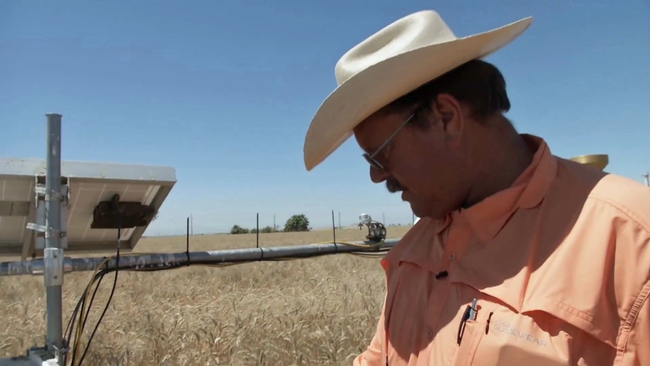Imperial Valley farmers bring home over $1 million in CDFA Healthy Soil grants
We would like to congratulate the 13 Imperial County farmers who received a total of $1,073,697.97 from CDFA's Healthy Soil Incentive Program.
California Department Food and Agriculture (CDFA) has been providing financial initiatives to California growers and ranchers through its Healthy Soil Program to enable farmers to implement conservation management practices that sequester carbon, reduce atmospheric greenhouse gases (GHGs), and improve soil health.
These 13 award-winning projects will reduce GHG emissions by an estimated 3,689.1 metric tons of carbon dioxide per year, which is equivalent to 797 passenger vehicles driven for one year.
This is a groundbreaking achievement for our county and a huge jump from last year's HSP solicitation period, demonstrating that farmers in this region are becoming very interested in adopting climate smart agricultural practices, provided they have funding.
“These climate smart agriculture incentive programs assist farmers in doing their part to try to sequester carbon and help sustain the environment,” Ronnie Leimgruber, one of the 13 Healthy Soils grant recipients, says. “Being awarded this grant will allow me to apply more compost than I normally would.”
2020 is the first year that Imperial County growers and ranchers applied for the Healthy Soil grants, which began in 2017.
With a maximum award of $100,000 per award, this grant was a great opportunity for California farming operations to pilot conservation management practices such as compost application, cover crops, nutrient management, and reduced till/no till for 3 to 10 years (depending on the practice) with minimal financial investment on their part. For the farmers and ranchers interested in the environmental benefits but unable to afford the cost of implementing these practices on their own, this program is a chance to try them firsthand.
UC Cooperative Extension in Imperial County and Imperial County Farm Bureau partnered to provide technical assistance for the Healthy Soils Program and Alternative Manure Management Program for 2020. Together we conducted outreach, held a series of workshops and assisted individuals with their grant applications.
The goal was to bring awareness to these climate smart agriculture incentive programs and assist growers in applying and maximizing their chances of receiving grants. Overall, Imperial County saw great progress from the prior year in the number of applicants and amount of awards, drawing recognition from Assemblymember Eduardo Garcia.
We are optimistic that these programs will continue to grow in future years, assisting local farmers in implementing additional farming practices that continue to benefit the environment. We encourage grant recipients to contact us for assistance with project implementation and data collection.
This year, CDFA's Healthy Soil Incentive Program received a total of 578 applications requesting $37.87 million, exceeding the $22 million available funds.
CDFA secretary Karen Ross stated, "Soil has the transformative power to help us stabilize our changing climate by capturing greenhouse gas emissions from the atmosphere and storing them underground, through the assistance of living plants and microbes, that improve both the atmosphere and the soil."
These conservation management practices are known to promote on-farm sustainability by building organic matter, encouraging nutrient cycling, increasing water holding capacity, reducing soil compaction, and lessening the need for synthetic fertilizers. In general, if you enrich your soil, it will boost the productivity of your cropping systems. However, every agricultural operation varies in its needs, the benefit it obtains from different conservation management practices depends on the location, size, crop rotation, irrigation system, and soil type. To enhance applicability according to site specific needs, CDFA allows applicants to choose from four categories, totaling 28 eligible practices selected from the United States Department of Agriculture (USDA) Natural Resources Conservation Services (NRCS) conservation practices standards.
For more information about climate smart agriculture, please contact me, Kristian Salgado, at kmsalgado@ucanr.edu or at (442) 265-7700.

